Biomechanical approach
What we do know
Idiopathic scoliosis is a deformity mainly observed in humans. It is probably the consequence of several anatomical aspects specific to the human species.
In the spine, the lordotic curvature starts very low, between the iliac bones and the sacrum, and then extends into the lumbar region.
As a result, the center of gravity is just above the pelvis, enabling us to simultaneously extend our knees and hips, maintain an upright posture and, ultimately, a horizontal gaze.
The spine is highly resistant to anterior and axial loads, but in human beings it is also subject to posterior loads that increase the rotation of the vertebral bodies.
In a growing patient, this reduction in the spine’s resistance to axial forces can lead to rotational instability and scoliosis.
Idiopathic scoliosis occurs as the spine grows.
It is the result of a cascade of biomechanical factors. Once the spine begins to rotate, the phenomenon is generally irreversible. It may stabilize, or on the contrary, progress towards a more severe deformity.
What we ignore
What forces are responsible for spinal deformation?
Is the spine inherently unstable?
Could its stability depend on the integrity of various stabilizers? What is the role of muscles? Ligaments? The intervertebral disc? Which scolioses have the highest risk to progress?
What advances were made thanks to the work supported by the Fondation Cotrel?
In Utrecht, Professor René Castelein and his team have studied the role of the intervertebral disc in the progression of scoliosis. They have established that instability and deformation mainly take place in the intervertebral disc and not in the vertebral bodies, as previously assumed.
Meanwhile, at the Institut de Biomécanique Humaine Georges Charpak, Paris, the team led by Prof. Skalli and Claudio Vergari has been working on a severity index, a technique which, based on a specific X-ray, should make it possible to differentiate scoliosis that will progress severely and from the one which will not require surgery.
At Toulouse Institute of Fluid Mechanics, Prof. Pascal Swider and Dr. Tristan Langlais are working on the hypothesis that the evolution of idiopathic scoliosis is an unstable dynamic phenomenon, which, combined with non-homogeneous pathological remodeling of tissues, leads to a divergence in growth equilibrium. They are therefore working on the development of two models, with the aim of determining which scolioses have a high risk of progression:
- A mechanical model, by modeling the forces exerted on the spine.
- A metabolic model, via the disc cell nutrition process and associated tissue growth.
At the Hospital for Special Surgery in New York, Profs Roger Widmann and Howard Hillstrom use surface topology to study 196 scoliotic patients before and after surgery. The 3D surface topography parameters of vertebral alignment and symmetry are precise and reliable. They distinguish patients with scoliosis from healthy children, and show clear correlations of surgical outcome and severity of imbalance.
At the Centre Alpin de la Scoliose, Grenoble University Hospital, Prof. Aurélien Courvoisier and Prof. Olivier Daniel are working to identify predictive factors for the worsening of idiopathic scoliosis. Their study combines clinical follow-up of 600 patients with an analysis of scoliosis displacement fields and transformations during its evolution, in order to extract an evolutionary identity for each scoliosis.
At the Nuffield Orthopaedics Centre, Oxford, UK, Jeremy Fairbank’s team is conducting a large-scale epidemiological project: data from thousands of patients are being studied to identify the incidence of scoliosis and determine risk factors.
The selection of projects supported jointly with the Scoliosis Research Society widens the field of research. Prof. Ying Li, from Michigan, USA, is focusing on the long-term study of titanium debris in surgical patients. The project aims to address the effects on local bone mineralization and the possible accumulation of waste products in the blood or in certain organs.
Impact for the patient : Modification of non-operative treatment
The intervertebral discs, which act as shock absorbers between the vertebrae, are deformed, unstable and fragile, leading to complications such as scoliosis.
It is possible to compensate for these anomalies by strengthening the back muscles through specific muscle-strengthening exercises and physical and sporting activities. Intervertebral discs can be protected by adopting good ergonomic postures (at the office, in front of screens, etc.) and limiting poor posture when carrying heavy loads.
Researchers and their works
Pr Ayman Assi
Laureate 2024
Pr René Castelein
Laureate 2021
Pr Aurélien Courvoisier
Laureate 2021
Mr Olivier Daniel
Laureate 2021
Mr Jeremy Fairbank
Lauréat 2000, 2007
Pr Howard Hillstrom
Laureate 2019
Dr Keita Ito
Laureate 2021
Dr Tristan Langlais
Lauréat 2011
Dr Ying Li
Lauréat 2022
Dr Rebecca Rolfe
Lauréate 2024
Dr Tom Schlosse
Laureate 2021
Dr Anne-Marie Tassin
Laureate 2024
Pr Wafa Skalli
Laureate 2000, 2017
Dr Pascal Swider
Laureate 2011
Dr Claudio Vergari
Laureate 2017
Dr Christine Vesque
Laureate 2024
Pr Roger Widmann
Laureate 2019


